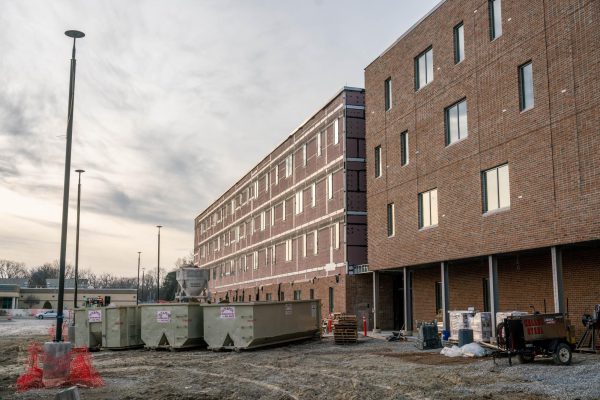Lab-Based Natural Science Courses Adapt to Remote Learning
Natural science classes with hands-on lab components have undergone significant adjustments following the shift to remote learning for the second half of the spring semester. Professors have developed a range of strategies to convert interactive courses to an online format — from preparing lab kits for each student to take home before they left campus, to pre-recording data-collecting labs, to having students explore their own backyards or local parks.
Chair and Associate Professor of Chemistry and Biochemistry Jason Belitsky spoke to the challenges posed to science courses, especially for larger classes required for certain majors or minors. Belitsky’s Bioorganic Chemistry class alone enrolled approximately 70 students this semester.
“In science classes, it tends to be very vertical in the sense that there’s a certain amount of stuff to learn in first-semester Organic [Chemistry] to go onto second-semester Organic, et cetera, and often there’s an external test that people are thinking about,” he said. “For CHEM 254, many [in] the class will take the MCAT.”
In addition to the cumulative nature of Oberlin’s science curriculum, the absence of an in-person lab experience poses additional challenges for students studying natural sciences.
“There’s really nothing that replicates doing the experiment yourself live and in-person,” Belitsky said. “And so I think that people are trying the best they can with these different versions. Particularly, I think students are learning how to analyze the data [and] think about results of the experiments. But in terms of physically doing the experiment, it’s extremely hard to replicate virtually.”
Professors have had to develop new strategies for teaching their interactive classes following the sudden shift to remote learning.
Jason Stalnaker, associate professor of Physics and chair of Physics and Astronomy, prepared lab kits for the 10 students in his electronics course. While these kits allowed the students to conduct a number of the labs remotely, some of the remaining analog labs required outside materials. To address this issue, Stalnaker provided software that allows students to participate in digital versions of the physical labs.
Double-degree fifth-year Andrew Santiago is enrolled in Stalnaker’s lab, and has been impressed by Stalnaker’s approach to remote lab work.
“I think Jason’s lab has been very successful at the remote transition,” Santiago wrote in an email to the Review. “Most of the class was unchanged, except that we were all assembling our own circuits and were in Zoom breakout rooms with our lab partners instead of working together to make one shared circuit.”
Chair and Associate Professor of Biology and David Orr Associate Professor of Environmental Studies Roger Laushman has also had to generate new pedagogical strategies for his class, Environmental Biology, in wake of the current pandemic.
“[Students] don’t have a formal lab, but they have a field portion of the class where they keep a field journal, so that was something that was altered because some of them are just having to do their field site wherever they are,” Laushman said. “Some of them are in places where they’re seeing some new things, and several of them have mentioned they’ve never really looked at their backyards so closely and tied it with what they’re learning. They’re having a new perspective on the birds and the plants in their yards.”
As the semester winds down, Beltisky’s thinking has shifted toward the fall semester and how he will adapt if the pandemic continues to keep students away from campus.
“People also are preparing this on-the-fly in terms of how they adapt,” Beltisky said. “So I think if we do have a situation like a remote start next year, we will be thinking very carefully about the ways that we can deliver lab content. It may or may not be similar to what we’re doing now.”






